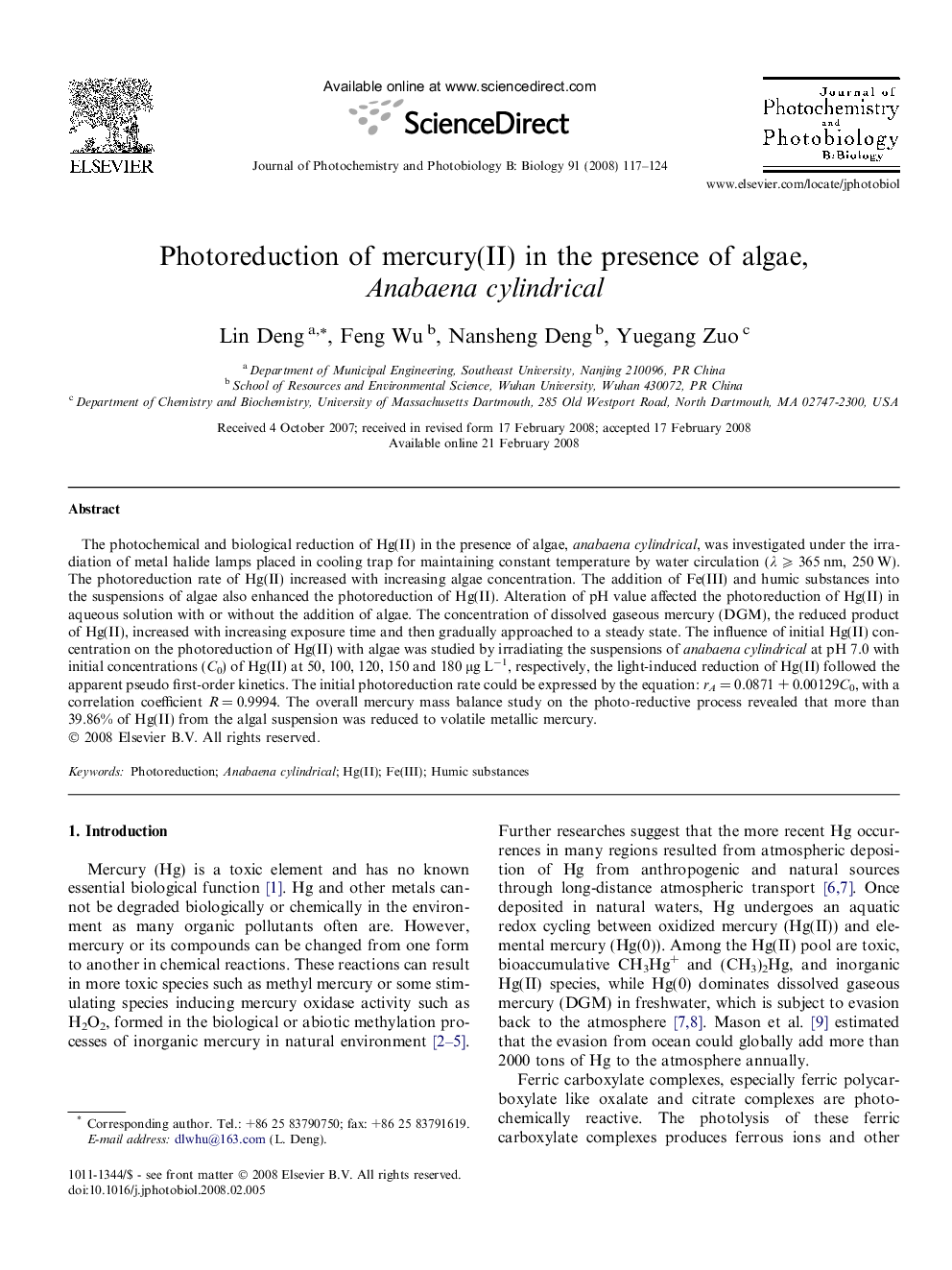| Article ID | Journal | Published Year | Pages | File Type |
|---|---|---|---|---|
| 30369 | Journal of Photochemistry and Photobiology B: Biology | 2008 | 8 Pages |
The photochemical and biological reduction of Hg(II) in the presence of algae, anabaena cylindrical, was investigated under the irradiation of metal halide lamps placed in cooling trap for maintaining constant temperature by water circulation (λ ⩾ 365 nm, 250 W). The photoreduction rate of Hg(II) increased with increasing algae concentration. The addition of Fe(III) and humic substances into the suspensions of algae also enhanced the photoreduction of Hg(II). Alteration of pH value affected the photoreduction of Hg(II) in aqueous solution with or without the addition of algae. The concentration of dissolved gaseous mercury (DGM), the reduced product of Hg(II), increased with increasing exposure time and then gradually approached to a steady state. The influence of initial Hg(II) concentration on the photoreduction of Hg(II) with algae was studied by irradiating the suspensions of anabaena cylindrical at pH 7.0 with initial concentrations (C0) of Hg(II) at 50, 100, 120, 150 and 180 μg L−1, respectively, the light-induced reduction of Hg(II) followed the apparent pseudo first-order kinetics. The initial photoreduction rate could be expressed by the equation: rA = 0.0871 + 0.00129C0, with a correlation coefficient R = 0.9994. The overall mercury mass balance study on the photo-reductive process revealed that more than 39.86% of Hg(II) from the algal suspension was reduced to volatile metallic mercury.
